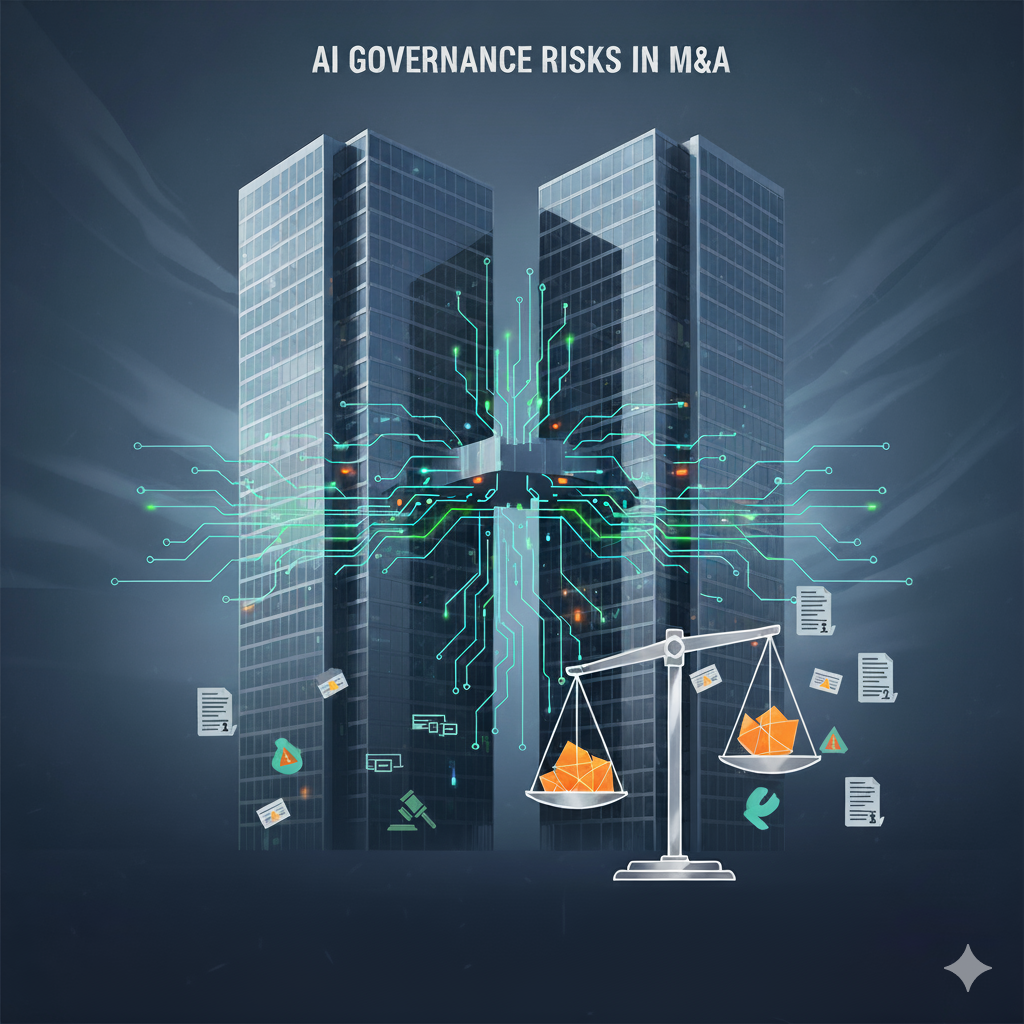Private equity and diligence consultants have long experience identifying and pricing risk in deals – whether technical debt, HR debt, or intellectual property concerns. In 2025, another factor is reshaping the diligence process: AI governance risk.
With AI adoption accelerating, buyers must understand the unique compliance, bias, and IP challenges AI introduces – both for vendors building AI products and companies deploying AI internally. Ignoring these risks can create significant liabilities in M&A transactions.
AI Governance Risks in M&A
1. Regulatory and Compliance Risk
The largest source of “AI risk debt” comes from regulatory exposure. With 45 U.S. states considering AI laws – and federal, EU, and local regulations already active—compliance costs are mounting.
Key regulations shaping M&A diligence include:
-
Colorado AI Act (2026): Requires AI deployers and developers to implement robust AI governance, referencing frameworks like the NIST AI Risk Management Framework (NIST AI RMF) and ISO 42001.
-
EU AI Act (2026): Applies globally to companies doing business in the EU. Its “high-risk” categories include healthcare, education, infrastructure, and criminal justice—imposing long compliance timelines (often 6+ months).
-
NYC Local Law 144 (2023): Mandates annual bias audits for AI-powered hiring tools, with results published publicly—a reputational and compliance risk.
2. Bias and Litigation Risk
AI bias poses regulatory, litigation, and reputational challenges.
Example: Workday faces litigation from a job applicant claiming its AI systems unfairly screened him out of jobs. Even beyond lawsuits, public perception of bias can damage a company’s reputation and valuation.
3. Intellectual Property (IP) and Data Privacy
Targets using AI may face exposure if they cannot prove:
-
Proper sourcing and licensing of training data.
-
Compliance with privacy rules on personally identifiable information (PII).
-
Data provenance when uploading IP into foundational models like ChatGPT.
For investors, these risks touch both regulatory compliance and protection of core intellectual assets.
The Solution: Implementing AI Governance Frameworks
For organizations, the solution is clear: build an AI governance and compliance program.
This often involves adopting frameworks such as:
-
NIST AI RMF (U.S. risk management framework)
-
ISO 42001 (certifiable global AI governance standard)
-
EU AI Act requirements (for high-risk industries)
Implementing these frameworks typically takes 3-6 months and requires significant investment. However, companies that do the work upfront become more attractive acquisition targets. Conversely, buyers should carefully account for “AI governance debt” when pricing deals.
Conclusion
AI governance is now a core part of M&A due diligence. From compliance costs to bias litigation to IP exposure, overlooking these risks can result in expensive surprises post-deal.
Next Step: Proceptual helps private equity and corporate buyers evaluate AI governance risks during due diligence. Contact us to learn how our audits and compliance programs reduce risk in your transactions.
